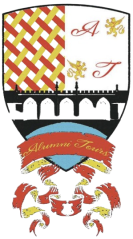Literary Oxford

Literary Oxford
“And that sweet city with her dreaming spires, she needs not June for beauty’s heightening”
Matthew Arnold
Literature’s contributions to how Oxford sees itself cannot be understated. In 1865, Matthew Arnold wrote Thrysis; a poem which describes the view of Oxford from nearby Boars Hill. The extract above is the first mention of Oxford’s “dreaming spires”, a slogan which has been heartily embraced by the city. What students dream about is anyone’s guess, but that books feature is undeniable. Oxford is said to have more published writers per square kilometre than any other city in the UK.
The Inklings, one of the most famous literary groups of the 20th century met and thrived in Oxford. Their best-known members were C.S. Lewis and J.R.R. Tolkien, both of whom were lecturers at the university. The group also included Charles Williams and the academic Hugo Dyson who, upon hearing one version of Tolkien’s work, reportedly exclaimed, “oh God, not more elves!”. If you wish to absorb the same inspiration as these literary giants, head to their favourite meeting place and watering hole, The Eagle and Child. This charming old pub is located on St. Giles and is wholly owned by St. John’s College.
The Inklings also met across the road in the now sadly closed Lamb and Flag. The pub, which operated on that site from 1613 until 2021, was another meeting house of the Inklings. These are not the only literary links to this sadly passed pub, Thomas Hardy was said to have written most of Jude the Obscure whilst sitting at the Lamb and Flag’s tables. The Lamb and Flag was also a favourite haunt of former Prime Minister Tony Blair, who, being an author of nine published works, qualifies for inclusion into this blog!
Oxford has some seriously impressive literary kudos. J.R.R. Tolkien not only studied at Exeter College Oxford, he taught at Pembroke College and Merton College between 1925 and 1959. Before ever beginning on The Lord of the Rings, Tolkien was instrumental in writing the Oxford English Dictionary. Whilst working at the dictionary, Tolkien researched words with tricky etymologies, like walnut, walrus, and wampum. It his love of etymologies and the structures of language which eventually led Tolkien to write Elvish and, in order that he had somewhere to use it, The Lord of the Rings. Although Middle Earth is a world quite different from our own, Tolkien took inspiration from his surroundings, claiming that the Radcliffe Camera was his inspiration for Sauron’s temple to Morgoth on Numenor.
As noted, Tolkien was a fast friend of C.S. Lewis, who had his own teaching post at Magdalen College. During the Second World War, Lewis housed evacuee children in his Oxfordshire home. This was common practice at the time; children from big cities which were in danger from bombing raids were sent to live in the countryside where it was safer. Lewis housed four children during the War. But having no children of his own, the house was not set up for children’s games and they were left to their own devices. Watching the games, the children played with their imagination inspired Lewis to write The Chronicles of Narnia. Oxford, too, inspired many of the features in these beloved novels. St. Mary’s Passage is a small street between the High Street and Radcliffe Camera which features an old-fashioned lamppost. This reportedly served as the inspiration for the lamppost which the children discover upon passing through the wardrobe. Further down this street is a heavy wooden door leading to an administrative building of Brasenose College. The door itself inspired the wardrobe which the Pevensie children pass through to Narnia. Framing the door are two statues of Satyrs, which reportedly inspired Mr. Tumnus.
Whilst at Magdalen, Lewis was the tutor of John Betjeman, who later became the poet laureate. Despite his masterful poetry, Betjeman was a poor student and did not get along with Lewis. He left Oxford without receiving his degree (although was awarded in honorary doctorate in 1974). Betjeman was unusual in that his poetry was both critically acclaimed and commercially popular.
Lewis and Betjeman are not the only literary figures attached to Magdalen College. Perhaps the most famous, extravagant, and maligned literary figure in Oxford’s history is the notorious Oscar Wilde. Wilde studied at Magdalen College between 1874 and 1878, where he developed his tastes for aesthetic and decadent movements, which informed his writings in future years.
Perhaps the Dreaming Spires allow us to dream about beloved fantasy settings. Alice in Wonderland is another novel inspired by the charm and mystery of Oxford. Lewis Carrol was the penname of Charles Dodgson, a mathematics professor at Christchurch College. Alice was the name of a real girl, Alice Liddell, the daughter of the Dean of Christchurch. Originally writing the story to entertain Alice and her sisters when they were children, Dodgson presented Alice with a bound copy of Alice in Wonderland on her wedding day. Alice was delighted and encouraged Dodgson to published. Today, there is a stained-glass relief to Alice in the Christchurch College Chapel.
No literary appreciation of Oxford would be complete without mentioning Blackwell’s. Proudly looming over Broad Street, Blackwell’s was founded by Benjamin Henry Blackwell in 1879. The son of the first city librarian, Benjamin Blackwell began selling books out of a 12ft square room, but quickly grew to engulf the cellar, upstairs, and neighbouring shops. Now, Blackwell’s cellar (called the ‘Norrington Room’) contains 160,000 books on 5km of shelves and is the largest single room selling books in Europe. Benjamin Blackwell was a well-respected citizen and was eventually elected the first liberal councillor of Oxford North. In 1920, he was awarded the Freedom of the City of London, an extremely high honour.
Books set in Oxford include Tom Hardy’s Jude the Obscure, Phillip Pullman’s His Dark Materials and The Book of Dust, Brideshead Revisited by Evelyn Waugh, Colin Dexter’s Inspector Morse, and Zuleika Dobson by Max Beerbohm.
